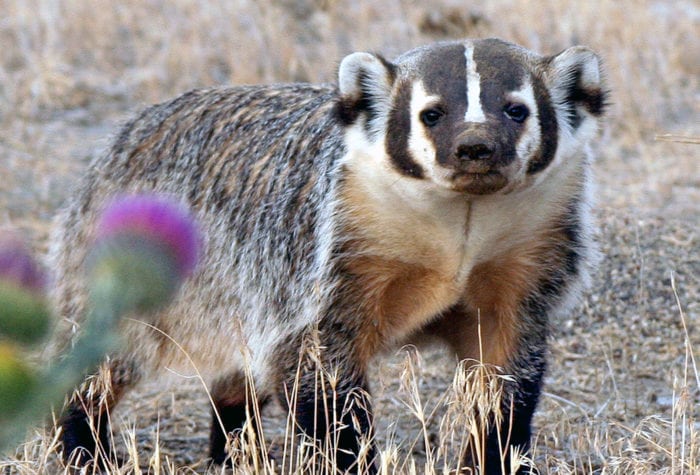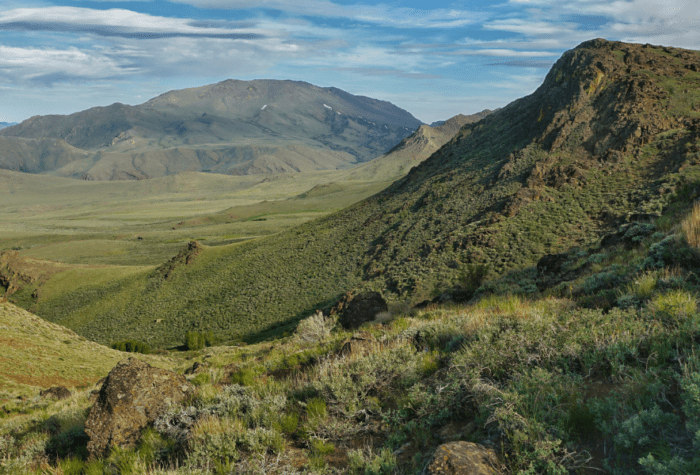Author: Mark Salvo | Published: May 29, 2024 | Category: Coming Up
This article originally appeared in the Spring + Summer 2024 Desert Ramblings
After three decades of advocacy, this is our year to protect the Owyhee Canyonlands.
Nothing worthwhile ever happens quickly or easily.
I was reminded of this recently when I received an envelope on my desk, sent from a longtime ONDA member. Inside was a mint-condition 1992 edition of this very newsletter, along with a note that included the reminder, “You have come a long way as an organization! Thank you for all the good work!”
As I flipped through the once-news stories and calls for advocacy, I saw before me numerous success stories and answered actions. Those who have followed along with ONDA know that conservation work does not happen quickly nor easily. But even if it takes years or decades, the impact of your advocacy is something that will be looked back on, and appreciated, forever.
ONDA’s Owyhee Canyonlands campaign, aiming to protect more than a million acres of southeastern Oregon’s iconic national treasure, has arrived at a pivotal moment.
After more than thirty years of advocating for protection for Oregon’s Owyhee, the last four years representing conservation interests in efforts to secure wilderness designation for the landscape, and the last twelve months launching a national monument campaign, ONDA and our community are on the precipice of forever protecting this remote and irreplaceable landscape.
Today, we’ve arrived at our next best conservation opportunity, and we could not be more excited about the possibilities ahead.
Where are we today?
We have not one but two opportunities to protect the Owyhee Canyonlands this year, beginning with Senator Ron Wyden and Jeff Merkley’s proposal, the “Malheur Community Empowerment for the Owyhee Act.” First introduced in the Senate in 2019, every new iteration of this bill has been better than the last. The most recent version was passed with bipartisan support by the Senate Committee on Energy and Natural Resources, the farthest a bill to protect the Owyhee has ever progressed in Congress.
The Malheur CEO Act includes three primary components:
- Designates more than 1.1 million acres of wilderness in the Owyhee Canyonlands—adding by nearly 50 percent the total acres of wilderness protected statewide in Oregon.
- Transfers 30,000 acres of land into trust for the Burns Paiute Tribe and creates tribal co-stewardship opportunities on adjacent public lands.
- Establishes a flexible, adaptive, science-based grazing management and monitoring program designed to improve the ecological health of public lands on 4.5 million acres in southeastern Oregon.
Senators Wyden and Merkley are to be congratulated for navigating the challenges of developing and advancing this bill in the Senate. And with your sustained advocacy, we’ll get this effort to the finish line and protect the deep, rugged canyons, rolling sagebrush plains and stunning rivers of Oregon’s Owyhee.
This effort is a testament to the importance of protecting the Owyhee as conservationists, the Burns Paiute Tribe, ranchers and many others have all come together to protect more than a million acres of public lands.
What else can we do?
While we will continue to advocate for Senator Wyden and Merkley’s wilderness legislation, we are simultaneously pursuing a second option to permanently protect the Owyhee in the event that Congress cannot pass the bill: a presidentially proclaimed Owyhee Canyonlands National Monument.
Presidents are authorized to declare national monuments on public lands and waters to conserve “objects of historic or scientific interest” for current and future generations. = Eighteen presidents—including nine Republican and nine Democrat—have used this power over the past 100 years to protect deserving areas.
No landscape is better qualified for monument designation than the Owyhee, a region rich in ecological, cultural, historic, geological, archaeological and even paleontological resources. And if that isn’t enough, Oregon’s Owyhee Canyonlands also preserve some of the darkest night skies in the lower 48 states. Add astronomical marvels to the long list of Owyhee values deserving of presidential protection.
ONDA is excited to lead a huge coalition of organizations representing millions of people from across the United States that have convened in recognition of both the need and opportunity to designate an Owyhee Canyonlands National Monument. Launched in September 2023, the Protect the Owyhee Canyonlands Campaign is working alongside tribal advocates, sporting enthusiasts, artists, businesses and local residents to promote the landscape for monument designation.
The national monument campaign is primed for success as conservation advocates continue calling on President Biden to take action on the Owyhee. Oregon’s Owyhee Canyonlands couldn’t be more deserving of this national attention.

What comes next?
While there are a few differences between these two approaches, both would permanently protect more than 1 million acres of desert wildlands in the Owyhee, and the abundant fish and wildlife, cultural resources and outstanding recreational opportunities found there. Importantly, both approaches would stave off mounting threats that put the Owyhee’s exceptional values at risk.
Looking back at our 1992 Desert Ramblings newsletter on my desk, I see what we’ve accomplished in more than 30 years since then. At the time of that publication, I’m not sure we knew the impact we’d have on high desert conservation. When the time comes for us to look back on the Owyhee Canyonlands campaign—be it 10, 20, or 30 years from now—I imagine a scenario in which we recount the successes and achievements this tenacious community of desert conservation advocates were able to accomplish.
To get there, every action matters in our Owyhee Canyonlands campaign. Thank you for your sustained advocacy and calls for protecting this iconic landscape. Public support, demonstrated in a multitude of ways, will get the job done.
Now is the time for Oregon’s Owyhee. Please visit onda.org/take-action to become involved!

